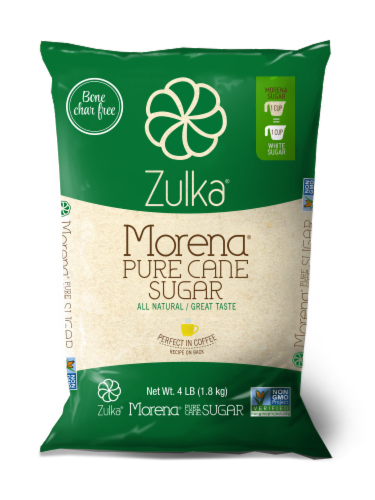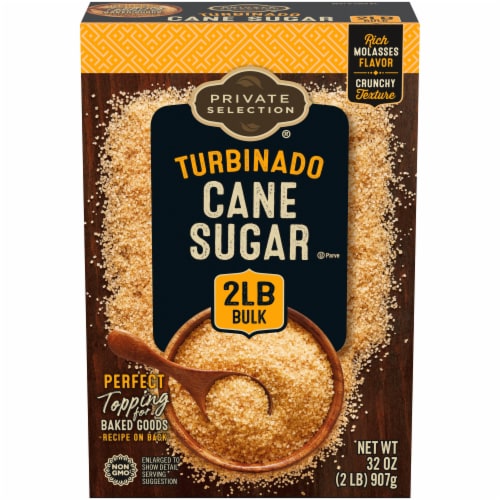Comprehending the Critical Strategies and Technologies Used in Modern Walking Cane Sugar Handling
The evolution of walking cane sugar handling has been substantially formed by the combination of sophisticated strategies and innovations that address both performance and sustainability. Enzyme-assisted extraction and advanced refining approaches have changed yield optimization, while automation helps with operational reliability. In addition, the emphasis on sustainable practices mirrors a growing recognition of environmental impact. As we discover these important improvements, it comes to be crucial to take a look at how they not just improve production but likewise line up with broader market patterns and customer needs, raising questions concerning the future of sugar handling and its effects for international markets.
Historical Context of Walking Cane Sugar Processing
The historical context of walking cane sugar handling exposes a rich tapestry of farming innovation and cultural exchange that has formed its growth over centuries. The procedure of fine-tuning and removing sugar acquired momentum in India, where approaches for condensation were improved around the Sixth century.

Advanced Extraction Methods
Efficiency in walking cane sugar extraction has actually seen substantial advancements, driven by the need for higher returns and reduced production costs. Standard techniques have actually progressed, giving means to ingenious modern technologies that enhance the efficacy of the removal procedure. One noteworthy innovation is the usage of enzyme-assisted extraction, wherein specific enzymes break down cell walls and release even more sucrose from the walking stick fibers. This method not just boosts sugar return yet also reduces the energy needed for handling.
Additionally, the adoption of membrane layer filtration modern technologies, such as nanofiltration and turn around osmosis, has transformed the splitting up of sugar from pollutants. These approaches permit the discerning permeation of sugar particles while retaining bigger contaminants, enhancing the removal procedure and lessening waste.
Furthermore, the integration of continuous extraction systems has actually led to improved operational performance. Cane Sugar Processing. These systems maintain a consistent flow of cane product, making sure ideal extraction conditions and lowering downtime connected with set processing
Cutting-edge Refining Technologies
Refining methods in cane sugar handling have actually gone through a transformative change, driven by the demand for higher purity and boosted item high quality. One of one of the most significant technologies is the adoption of membrane filtering innovations, such as ultrafiltration and nanofiltration. These procedures effectively get rid of impurities and colorants without the demand for extensive chemical treatments, consequently maintaining the sugar's all-natural flavor and boosting its allure.
An additional considerable development is using ion exchange materials, which allow for selective elimination of undesirable ions from sugar services. This modern technology not only raises the general purity of the end product however likewise contributes to minimized waste and environmental influence.
Additionally, innovations in adsorption techniques, using turned on carbon and other advanced materials, have verified reliable in decolorizing sugar services while preserving ideal quality. The assimilation of these innovative refining modern technologies makes certain that manufacturers can produce polished sugar with premium quality and taste, satisfying the evolving preferences of customers.
Automation and Control Equipment
Current developments in refining modern technologies have paved the way for substantial renovations in automation and control systems within cane sugar processing centers. These systems make use of advanced software program and equipment to enhance operational redirected here effectiveness, minimize human error, and make sure consistent item quality.
Modern automation integrates different elements, including sensors, actuators, and programmable logic controllers (PLCs), making it possible for real-time monitoring and control of crucial processes. As an example, temperature, flow, and stress prices can be specifically managed during removal, information, and condensation phases, optimizing performance and decreasing waste.
In addition, advanced data analytics and equipment knowing formulas play a crucial role in predictive upkeep, enabling operators to expect equipment failings prior to they occur. This proactive strategy not only reduces downtime however also extends the lifespan of machinery.
Additionally, automation assists in the implementation of Sector 4.0 concepts, empowering sugar mills to accomplish better connection and information exchange throughout procedures. Therefore, decision-making ends up being more nimble and enlightened, inevitably boosting the general competition of cane sugar manufacturing. With these developments, the industry is well-positioned to satisfy growing global needs while preserving functional excellence.
Sustainability Practices in Sugar Manufacturing
Sustainability techniques in sugar production have become increasingly vital as the market seeks to balance economic feasibility with environmental obligation. As customer understanding grows concerning the environmental impacts of farming techniques, sugar producers are embracing cutting-edge methods to minimize their eco-friendly footprint.
One significant method is the application of precision farming techniques, go to these guys which make use of information analytics to enhance resource use, such as water and fertilizers. This minimizes waste and decreases the influence on neighborhood ecological communities. Additionally, many producers are transitioning to renewable power sources, such as biomass from sugarcane byproducts, to power their procedures, thereby decreasing reliance on nonrenewable fuel sources.
Water administration techniques are additionally essential; rain harvesting and reliable watering systems assist minimize water scarcity concerns. Cane Sugar Processing. In addition, incorporated parasite management strategies minimize chemical usage, promoting biodiversity and soil health
Business social duty campaigns are arising, with business purchasing local areas and guaranteeing fair labor methods. By welcoming these sustainability techniques, the sugar market not just boosts its online reputation but also adds to a much more lasting farming landscape, leading the way for future click for info generations.

Final Thought
In summary, modern walking cane sugar processing includes an array of sophisticated techniques and innovations that considerably enhance effectiveness, yield, and sustainability. Collectively, these innovations place the walking cane sugar sector to fulfill modern demands while dealing with crucial worldwide challenges.
The development of cane sugar handling has actually been substantially shaped by the combination of sophisticated techniques and technologies that deal with both performance and sustainability.The historical context of walking stick sugar handling exposes a rich tapestry of agricultural advancement and social exchange that has actually formed its growth over centuries. Advancements in milling and refining emerged, laying the groundwork for contemporary cane sugar processing.Refining techniques in cane sugar processing have actually gone through a transformative change, driven by the demand for higher purity and boosted product high quality.In recap, modern-day cane sugar processing includes a variety of innovative techniques and modern technologies that significantly improve return, performance, and sustainability.